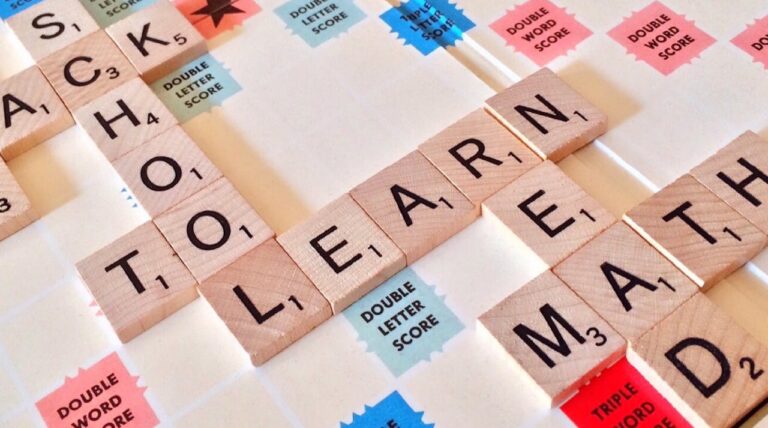SCAT – School and College Ability Test

What is the SCAT test and how is it scored?
The SCAT (School and College Ability Test) is used by Johns Hopkins CTY to identify gifted students in grades 2–8. It includes verbal and quantitative sections, each scored on a scale of 400–514. Scores are based on how students perform compared to older peers, with percentiles determining CTY program eligibility. Learn how SCAT scoring works and how to prepare with free practice tests.
What Is the SCAT Test?
The SCAT (School and College Ability Test) is a standardized exam developed by the Johns Hopkins Center for Talented Youth (CTY) to identify academically advanced students. Originally designed as a college admissions test, the SCAT is now used to assess the academic potential of gifted students in elementary and middle school. Students take a version of the test that is two to three grade levels above their current grade, making it a true challenge and an effective way to identify exceptional talent.
SCAT Test Format
The SCAT is divided into two main sections:
1. Verbal Section
Measures vocabulary and verbal reasoning skills
Consists of analogy questions (e.g., Bird is to Fly as Fish is to Swim)
2. Quantitative Section
Assesses mathematical reasoning, not calculation
Includes comparison-type questions (e.g., Which is greater: Quantity A or Quantity B?)
Each section has:
55 questions (including 5 experimental that don’t count toward the final score)
22 minutes to complete each section
SCAT Test Levels by Grade
| SCAT Level | Targeted Grades | Test Content Grade Level |
|---|---|---|
| Elementary SCAT | Grades 2–3 | Grade 4–5 content |
| Intermediate SCAT | Grades 4–5 | Grade 6–8 content |
| Advanced SCAT | Grades 6+ | Grades 9–12 content |
Free SCAT Practice
Students can take free SCAT practice tests on our site to simulate real testing conditions and gain confidence. Our SCAT sample questions cover both verbal and quantitative sections and are tailored by SCAT level.
SCAT Scoring Explained
The School and College Ability Test (SCAT) uses a scaled scoring system to assess student performance in two areas: Verbal Reasoning and Quantitative Reasoning. Each section is scored separately, and the results are designed to reflect how well a student compares to older students in the general population.
How the SCAT Score Works
Raw Score: The number of questions answered correctly out of 50 (excluding 5 experimental questions)
Scaled Score: The raw score is converted to a scaled score to account for test difficulty and student grade level
Percentile Rank: This shows how the student performed compared to a norm group of older students
SCAT Scaled Score Ranges by Level
| SCAT Level | Scaled Score Range (per section) |
|---|---|
| Elementary SCAT | 400–471 |
| Intermediate SCAT | 405–482 |
| Advanced SCAT | 410–514 |
Total scores are not reported; only section scores are provided.
A high score doesn’t mean getting all the answers correct—it means scoring better than the average student in higher grades.
What Is a Good SCAT Score?
A “good” SCAT score depends on the grade level and the requirements of programs like Johns Hopkins CTY. In general:
90th percentile or higher: Qualifies for CTY Advanced Level courses
75th percentile or higher: May qualify for CTY Academic Explorations
50th percentile or higher: Considered average when compared to older students
Understanding the Score Report
After completing the SCAT, students typically receive:
Verbal Reasoning Score
Quantitative Reasoning Score
Percentile Rankings for each section
Interpretation of eligibility for CTY programs
Free SCAT Sample Questions
SCAT Verbal Section – Analogies
1. Finger : Hand :: Toe : ?
A. Foot
B. Leg
C. Sock
D. Shoe
Answer: A. Foot
2. Kitten : Cat :: Puppy : ?
A. Bark
B. Dog
C. Pet
D. Animal
Answer: B. Dog
3. Pencil : Write :: Eraser : ?
A. Fix
B. Remove
C. Clean
D. Erase
Answer: D. Erase
4. Fish : Water :: Bird : ?
A. Air
B. Sky
C. Tree
D. Wing
Answer: B. Sky
5. Big : Small :: Tall : ?
A. Short
B. High
C. Long
D. Tiny
Answer: A. Short
6. Eye : See :: Ear : ?
A. Talk
B. Sing
C. Hear
D. Listen
Answer: C. Hear
SCAT Quantitative Section – Comparisons
7.
Quantity A: 3 × 7
Quantity B: 21
Answer: C. The two quantities are equal
3 × 7 = 21
8.
Quantity A: 24 ÷ 3
Quantity B: 7
Answer: B. Quantity B is greater
24 ÷ 3 = 8, so A is greater
9.
Quantity A: 4²
Quantity B: 18
Answer: A. Quantity A is greater
4² = 16, so B is greater
(Correction: 4² = 16 < 18 → Correct Answer: B. Quantity B is greater)
10.
Quantity A: ⅓ of 60
Quantity B: 25
Answer: A. Quantity A is greater
*⅓ of 60 = 20, 25 is greater → B is correct)
(Correction again: ⅓ of 60 = 20 → Correct Answer: B. Quantity B is greater)
11.
Quantity A: 5 × 5
Quantity B: 4 × 6
Answer: A. Quantity A is greater
25 vs. 24
12.
Quantity A: 50% of 80
Quantity B: 40
Answer: C. The two quantities are equal
50% of 80 = 40
Frequently Asked Questions About the SCAT Test
The SCAT is primarily used by Johns Hopkins Center for Talented Youth (CTY) to identify academically gifted students in grades 2–8. It helps determine eligibility for CTY programs by measuring verbal and quantitative reasoning skills above grade level.
Students from Grade 2 through Grade 8 can take the SCAT. The test they take is designed for students two to three grades ahead, so a 2nd grader would take a test written at the 4th-grade level.
The SCAT consists of two multiple-choice sections:
Verbal Reasoning (Analogies)
Quantitative Reasoning (Math Comparisons)
Each section measures reasoning ability, not curriculum-based knowledge.
Each section (Verbal and Quantitative) receives a scaled score between approximately 400–514, depending on the test level. Scores are compared to older students to determine percentile rankings.
Eligibility depends on percentile rank:
90th percentile and above may qualify for CTY Advanced courses.
75th percentile and above may qualify for CTY Academic Explorations.
Yes.
22 minutes per section
5-minute break between sections
Students answer 55 questions per section, but only 50 are scored (5 are unscored pilot questions).
The SCAT is offered online through a remote proctoring system or at a designated testing center via Prometric. Registration is done through the CTY website.






